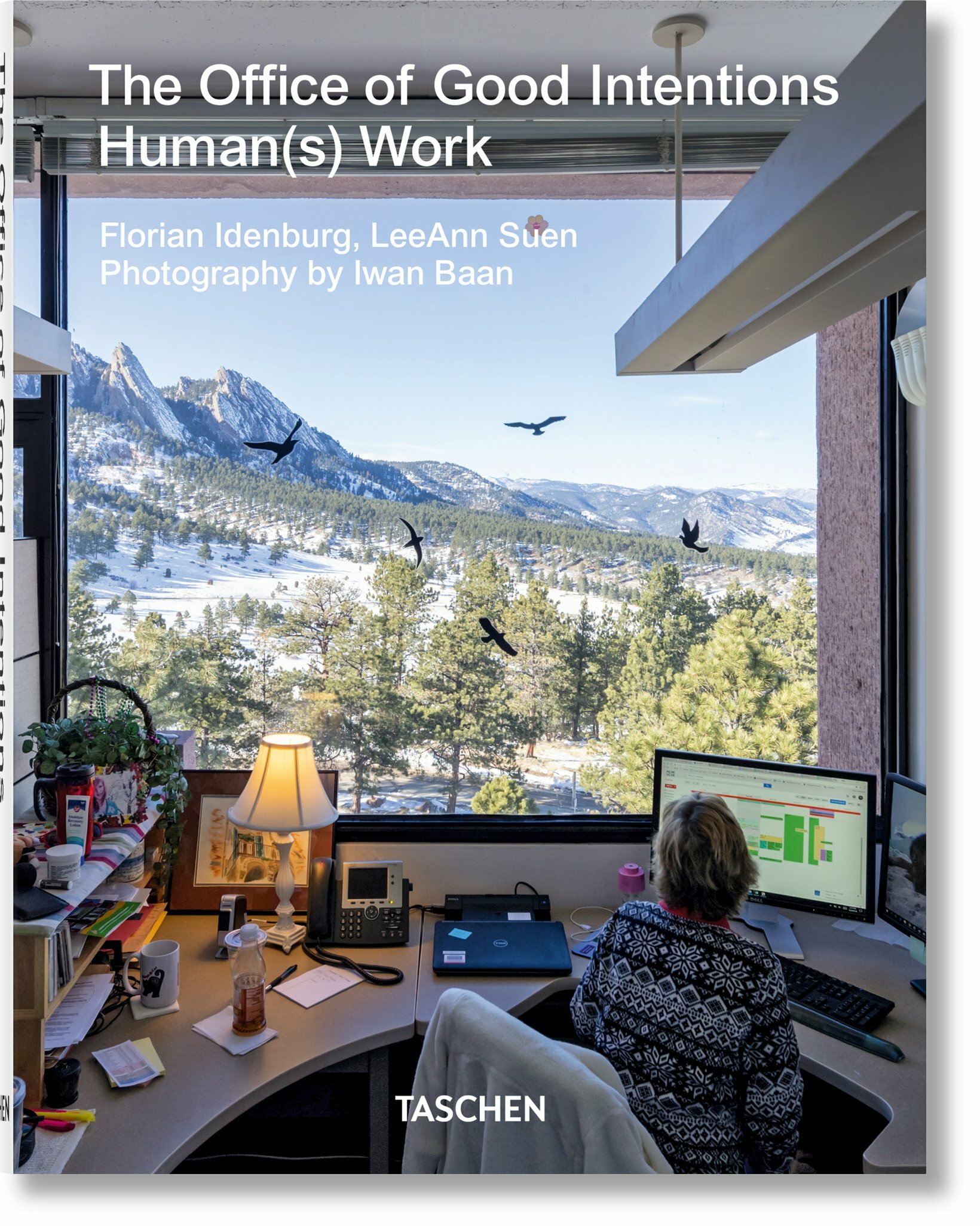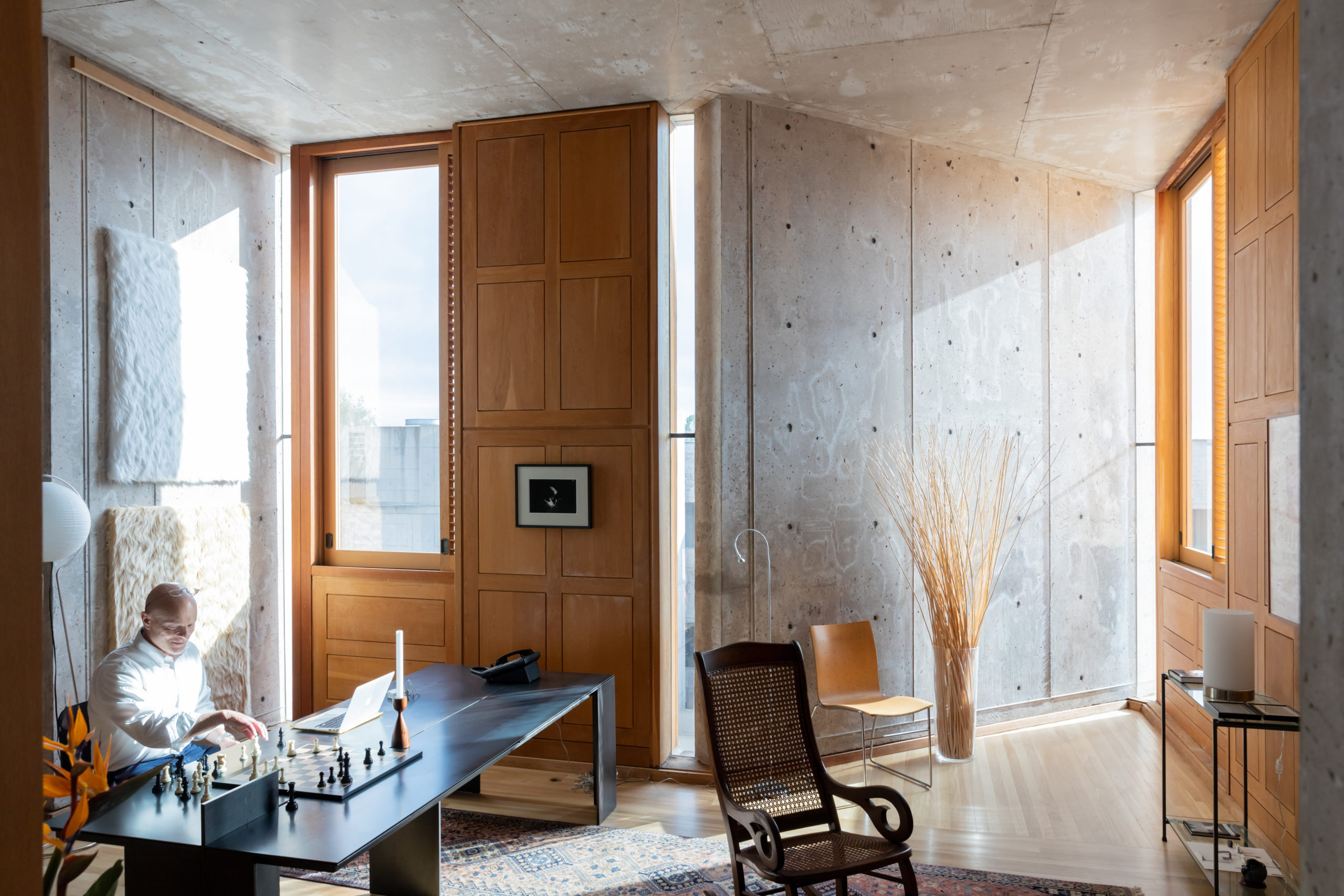The office is one of those spatial types that offer perennially productive problems for designers. The Office of Good Intentions says it all in its title: Drawing attention to “good intentions” is necessary only when they don’t come to fruition. Although the book, written by Florian Idenburg and LeeAnn Suen, sets its primal scene in the 1960s, the office’s problem is as old as the office itself. The word bureaucrat was coined following the French Revolution to identify the regressive forces that were supposedly holding society back from its true potential, an impression captured by Franz Kafka in his novel The Castle. (The author also worked as a law clerk.) Since then, the office has been synonymous with alienated labor of the white-collar variety.
Wisely, the authors of The Office of Good Intentions do not purport to offer a solution to our collective office woes. Instead, Idenburg and Suen have put together an expansive survey of attempts to bring technology, space, and social organization into harmonious alignment, with varying degrees of more-or-less short-lived success. The volume begins by recalling the dream of human-machine symbiosis (read: office worker and computer)—a fantasy that many, like MIT researcher Joseph Licklider (the subject of the book’s opening episode), expected would be realized around, say, 1970. It becomes clear in the following pages that technology intensifies the office problem at least as frequently as it furnishes solutions. Licklider was involved in the development of ARPANET, the precursor to the internet, which has become the one nefarious technology that now rules them all. Prefiguring this development, Stanford researcher Douglas Engelbart delivered “the mother of all technology demonstrations” in 1968, showcasing how interconnected devices could facilitate collaborative remote work and teleconferencing. We have seen how this story unfolds during our pandemic years of experimentation with remote work: It’s sometimes a relaxed and streamlined work session at the beach, but more often, it’s surveillance software virtually chaining workers to desks in makeshift—and oxymoronic—home offices.

A central theme of Idenburg and Suen’s book is the recurring attempts to make offices paperless. The first case study focuses on the evolution of advertising guru Jay Chiat’s “vision of a workplace for digital nomads.” It begins with Frank Gehry’s iconic Chiat\Day headquarters (1991) in Venice, California, where workers enter beneath a giant pair of binoculars (designed by Claes Oldenburg) into a freewheeling “carnival of charisma,” which the authors astutely link to painter Robert Rauschenberg’s Combine series. At the company’s New York office, designed in 1994 by Gaetano Pesce, employees were required to find a new workplace every day after checking out a fresh laptop through a window surrounded by alluring red lips. It didn’t work out: “In New York, employees simply stopped coming into the office, or else camped out in walled conference rooms,” readers learn. “In Los Angeles, workers used the trunks of their cars as filing cabinets and stopped returning their portable phones and PowerBooks.” After a 1995 merger with TBWA Worldwide to create TBWA\Chiat\Day, the firm’s newest office, designed by Clive Wilkinson Architects in 1998, dropped the earlier fun-house atmosphere in favor of office urbanism, complete with streets, neighborhoods, and buildings in the idiom of stacked shipping containers inside a giant warehouse-like space. The case study is rounded out by comments on Google and Facebook offices, which embrace the freewheeling aesthetics that Chiat\Day pioneered. If there is a lesson to be learned, it is that paperwork is part of the DNA of the office. Max Weber said as much in his sociology of bureaucracy a century ago. To paraphrase: Bureaucracy is when workers in an office use equipment to shuffle paperwork.

Chapters in The Office of Good Intentions alternate between wide-ranging interpretive essays and detailed case studies presented mostly through photographs, with a few other odd bits (like studies of furniture and “smart” devices) sprinkled throughout. Iwan Baan’s photography strikes a beautiful balance between showcasing the messiness of inhabitation and a sense of spatial design. This is especially interesting in the cases of classic offices that now house new companies, as with the aspiring chefs on a floor of Kevin Roche John Dinkeloo and Associates’ College Life Insurance Company Headquarters. Other highlights include Arcosanti (Paolo Soleri), Weyerhaeuser Headquarters (SOM), and IBM Boca Raton (Marcel Breuer). Unlike more “architectural” studies of the office like Jeannette Kuo’s A-Typical Plan, the book does not include floorplans or other drawings, so it is difficult to compare post-occupancy conditions with the designers’ intentions. Overall, the book comes across less as a typological study than a theoretical text plus mood board. This may be a reflection of the contemporary ethos of office design, in which designers need to accommodate office reformers and their technological panaceas while mitigating unintended consequences.
The focus on flexibility is no surprise given Idenburg’s background. He and Jing Liu founded the New York–based firm SO–IL after working together in the office of SANAA, a firm known for open plans sparsely populated with groups of furniture. A case study of a SO–IL-designed production studio is the most minimal in the volume, with its palette of whites and grays, variably translucent or reflective. Suen, the book’s coauthor, earned an MArch at the Harvard Graduate School of Design and is an architect in Boston.

We should expect any book about offices in 2022 to be colored by a dystopian tinge, and The Office of Good Intentions delivers that in a closing section of speculative fiction in the vein of William Gibson’s Neuromancer, which offers critique by way of plausible futuristic example. Not that the main text shies away from critique: There is, for example, a passage comparing neoliberal “contract positions repackaged as ‘alternative employment arrangements’” with the Kelly Girl, “on-demand workers [who] were hired as temporary supplements to full-time, predominantly male, staff.” (These “brand-name office call girls” were introduced in 1946 by William Russell Kelly, whose successor company remembers him as “the founder of the modern temporary help industry.”) Sometimes reality is stranger than fiction.
The problem of the office is likely too big to be “just” a design concern. The question that may prompt a reader to pick up this book—How can I design a better workspace?—quickly transforms into something much broader—How can we design work?—and finally becomes How can our society be better?

Utopian projects referred to throughout the book, like Constant’s New Babylon (1956–74), demonstrate the ingredients of the problem have been understood for some time: automation, abundance, freedom of choice regarding employment and location, and the drive for self-fulfillment. Still, why isn’t work better? The Office of Good Intentions assembles the relevant puzzle pieces for an answer to this question without snapping them into place.
As for the larger question of how fulfilling work can fit within an improved social reality, real answers would follow Idenburg and Suen’s lead by burying the dream of liberation from paperwork and the myth of perpetual play, as both hazes mask ever more creative forms of exploitation.
